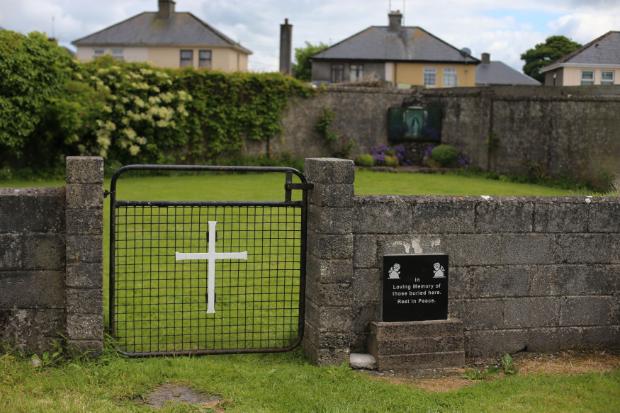Officials in Ireland commenced excavation work Monday at the site of a former Catholic-run institution for unmarried women and their children, beginning a complex forensic operation to identify the remains of approximately 800 infants and young children who died at the facility over four decades.

The long-awaited excavation at the former Bon Secours Mother and Baby Home in Tuam, County Galway in western Ireland, represents a significant step in the country’s ongoing reckoning with historical abuses within church-operated institutions. The work marks a crucial moment for survivors and families seeking answers about loved ones who died at the facility.
The home, operated by an order of Catholic nuns until its closure in 1961, was among numerous institutions that housed tens of thousands of orphans and unmarried pregnant women throughout much of the 20th century. These facilities were part of a system that forced women to surrender their children in what was then an overwhelmingly Roman Catholic society with strict moral codes regarding pregnancy outside marriage.
The investigation into the Tuam facility began in 2014 when historian Catherine Corless conducted research that revealed a disturbing discrepancy in record-keeping. Corless tracked down death certificates for nearly 800 children who died at the home between the 1920s and 1961, but could locate burial records for only one child, raising immediate questions about the fate of the remaining deceased infants.
Subsequent investigations uncovered a mass grave containing the remains of babies and young children within an underground sewage structure on the grounds of the former home. DNA analysis of the discovered remains revealed that the ages of the deceased ranged from 35 weeks gestation to 3 years old, indicating that both premature infants and toddlers were among those buried at the site.
A comprehensive government inquiry into Ireland’s mother-and-baby homes system revealed the scope of child mortality within these institutions. The investigation found that approximately 9,000 children died across 18 different mother-and-baby homes, with respiratory infections and gastroenteritis, commonly known as stomach flu, among the major causes of death.
The mortality rates reflected the poor living conditions and inadequate medical care that characterized many of these institutions, where vulnerable women and children were housed in circumstances that often prioritized moral judgment over basic welfare and healthcare needs.
The religious order that operated the Tuam facility has acknowledged the failures of the institution. The sisters who ran the home offered a “profound apology” and admitted they had failed to “protect the inherent dignity” of the women and children housed there, representing a rare acknowledgment of institutional responsibility for the documented abuses.
Irish Prime Minister Micheal Martin addressed the gravity of the situation on Monday, describing the historical circumstances surrounding the home. “It’s a very, very difficult, harrowing story and situation. We have to wait to see what unfolds now as a result of the excavation,” Martin stated, reflecting the national significance of the forensic work beginning at the site.
Daniel MacSweeney, who leads the exhumation project, emphasized the unprecedented nature of the forensic operation. “This is a unique and incredibly complex excavation,” he said in a statement, noting that the memorial garden at the site would be placed under forensic control and closed to public access beginning Monday.
MacSweeney confirmed that survivors and family members would have opportunities to observe the excavation work in coming weeks, recognizing the personal stakes involved for those seeking closure regarding relatives who died at the institution.
The forensic process will involve meticulous analysis and preservation of remains recovered from the site. Officials have established protocols to ensure that any identified remains will be returned to family members according to their wishes, while unidentified remains will receive dignified burial with appropriate respect for the deceased.
The excavation represents a two-year commitment to uncovering the full extent of what occurred at the Tuam site. The extended timeline reflects both the complexity of the forensic work required and the determination to conduct thorough investigations that can provide definitive answers to families and the broader Irish public.
The Tuam excavation occurs within the broader context of Ireland’s confrontation with its institutional past. The country has undergone significant social transformation in recent decades, moving away from the strict religious conservatism that enabled the mother-and-baby home system to operate with minimal oversight or accountability.
The work at Tuam follows years of advocacy by survivors, historians, and human rights activists who demanded official recognition of the abuses that occurred within Ireland’s network of religious institutions. The excavation represents validation of their efforts to ensure that the experiences of vulnerable women and children are not forgotten or minimized.
The forensic investigation will employ advanced scientific techniques to identify remains and potentially reunite families with deceased relatives after decades of uncertainty. The process acknowledges the fundamental human dignity that was denied to these children in life and seeks to provide appropriate recognition in death.
The Tuam excavation also serves as a form of historical accountability, documenting the systematic failures that led to high child mortality rates within institutional care. The findings may contribute to broader understanding of how social stigma, religious doctrine, and inadequate oversight combined to create conditions that proved fatal for hundreds of vulnerable children.
The project represents Ireland’s commitment to confronting difficult aspects of its past while honoring the memory of those who suffered within institutional systems. The excavation work at Tuam stands as both a memorial to the deceased children and a testament to the country’s determination to acknowledge historical injustices and provide dignity to those who were denied it in life.



